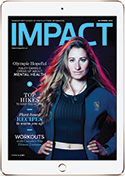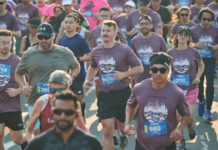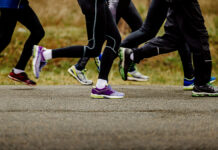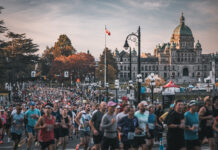
For centuries people have searched for the secret of staying young. Turns out, it might be as simple as staying active and getting regular exercise.
More and more research shows that many diseases often associated with aging – cancer, cardiovascular disease, Alzheimer’s disease, Parkinson’s disease and arthritis – can be influenced by poor lifestyle factors such as lack of physical activity, poor nutrition, excessive drinking and smoking. These diseases lead to a loss of independence and a decrease in overall quality of life. Kind of takes some of the shine off the golden years, doesn’t it?
Here’s the good news. A recent study published in Science in July 2020, found that after exercise the liver secretes a protein called Gpld1. Levels of this protein in the blood correspond to improved cognitive function. Research also shows exercise may decrease certain hormones known to trigger some types of cancer. And regular workouts benefit your immune response which can help to fight cancer and is especially essential at the moment as we’re living in the midst of the COVID-19 pandemic.
Now that we’re clear on the benefits of getting active and the consequences of inactivity, here are some ways to incorporate some moderate to vigorous activity into your life about two-and-a-half to five hours each week.
Guidelines
Take it to heart
Aim to do cardio workouts lasting 30 to 60 minutes. You can choose activities like walking, hiking, cycling, pickleball or dancing – pretty much anything that gets the heart and lungs going. To see the greatest benefits, you should be working at an intensity level of five to seven on a scale of one to 10.
Balance and Coordination
Within your activities, include movements that maintain and enhance balance such as cycling and yoga. Find activities that require coordination like pickleball and ones that promote range of motion like tai chi and qigong.
Whole Body Workouts
Engage all your major muscle groups – arms, chest, back, abdominals and legs – at least twice a week. Sports like swimming or cross-country skiing will give most of your major muscle groups a good workout. For the most targeted engagement, join a strength training class or follow a video at home. If you don’t have weight training equipment, use household items like jugs of laundry detergent, juice or canned goods. You could also fill water bottles with rocks or sand. Aim to use a weight heavy enough that you can complete up to 15 repetitions before needing a break. The last three repetitions should be difficult to complete.
Activity Level Shapes Your Workout
Anyone 65 years and older is commonly considered an older adult, but there are huge variations in physical ability among people as they hit the higher years. Instead of relying on age as a factor in planning your workouts, it’s more accurate to look at ability and activity levels.
Active Older Adults
For this group, age is just a number. You may have been active all your life or recently recommitted to a healthy lifestyle and are in the best shape of your life. Be sure your fitness regimen or active lifestyle adheres to the three guidelines.
Moderately Active
You may have been active when you were younger, but at some point, life got in the way. Or maybe you’re finally making fitness a priority. While striving to meet the guidelines above, start by aiming for 30 minutes of activity and increase the amount of time as your fitness level increases. Be sure to find activities you enjoy. If you don’t enjoy it, you’re less likely to stay with it.
Non-active, but Mobile
Start by speaking to your doctor about your plans to begin a fitness regimen. They may recommend programs or activities that suit your current level of fitness. Just like the active and moderately active older adult, you’re also going to strive to meet the guidelines listed above. Start slow and aim for bouts of 10-15 minutes. If you feel sore at first, that’s normal. It will get better with time. Drink water and rest. Your muscles should recover within two days.
 IMPACT Magazine’s November Edition
IMPACT Magazine’s November Edition
RBC Olympic hopefuls Hayley Daniels, Sam Effah and Kate Wright as our inspiring cover athlete stories! Get prepared for winter running, making movement part of your workday, and exploring great hikes near Calgary and Vancouver.
















